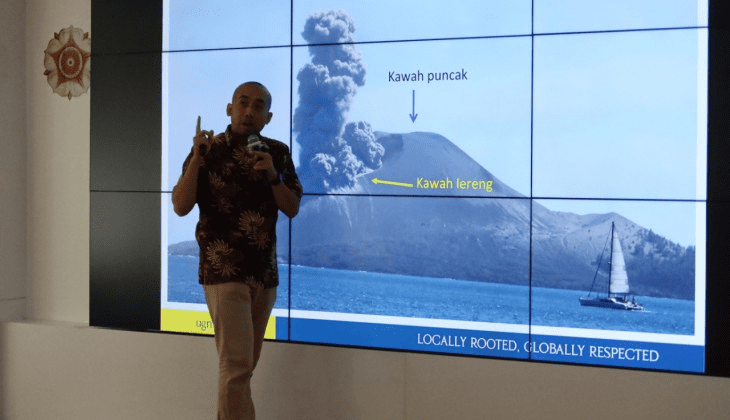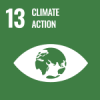
Communication is an important part of a disaster risk reduction or mitigation program, especially in disaster-prone areas. However, many of the terms related to disaster use foreign language vocabulary that is difficult for the general public to understand.
According to the Head of the Clinic for Environment and Disaster Mitigation (KLMB), Faculty of Geography, UGM, Prof. Dr. Suratman, M.Sc., it is necessary to make a disaster dictionary in the local language that is easier to understand and remember.
“Communication and literacy at the local level can save lives. So this language needs to be developed,” he said on Tuesday (17/12) at the Siti Nurbaya Center, KLMB Building, Faculty of Geography.
He said that natural disasters cannot be prevented, but natural disasters do not have to cause casualties.
For this reason, he invited students and researchers to carry out research related to natural disasters in Indonesia, the output of which was not only papers or scientific reports, but also knowledge or products that could be passed on to the community and have an influence on community readiness in facing disasters.
“Research should not be only scientific, but also implemented so that it can save lives. Disasters can happen but there are zero victims, that’s the spirit of this clinic,” he said in a one-day seminar discussing the research results from the UGM Faculty of Geography team regarding Mount Anak Krakatoa. This mountain activity received quite a lot of attention after the eruption in December 2018 which triggered a tsunami on part of the coast of the Sunda Strait.
UGM volcanology lecturer, Dr. Haryo Edi, explained that since its birth in 1930, Anak Krakatoa had experienced eruptions more than 100 times with a rest period of about 1-8 years and an average active period of 4 years.
Between 2001 and 2018, the eruption was dominated by ash rain, which is typical of strombolian eruptions. The tsunami that occurred in 2018 itself was the result of a process called flank collapse.
Although it surprised many people, flank collapses, according to a member of the research team, Dr. Herlan Darmawan, are common, although the intensity is quite rare.
“Actually, flank collapses are very common, but they rarely happen. Usually hot clouds and other processes are what happen,” he said.
One of the well-known flank collapses, he said, occurred on Mount St. Helen in 1980. In that case, the earlier signs were earthquake activity which had increased within two months before the collapse happened, accompanied by steam release.
Source: https://www.ugm.ac.id/id/berita/18864-perlu-kosakata-lokal-untuk-edukasi-bencana-yang-efektif



